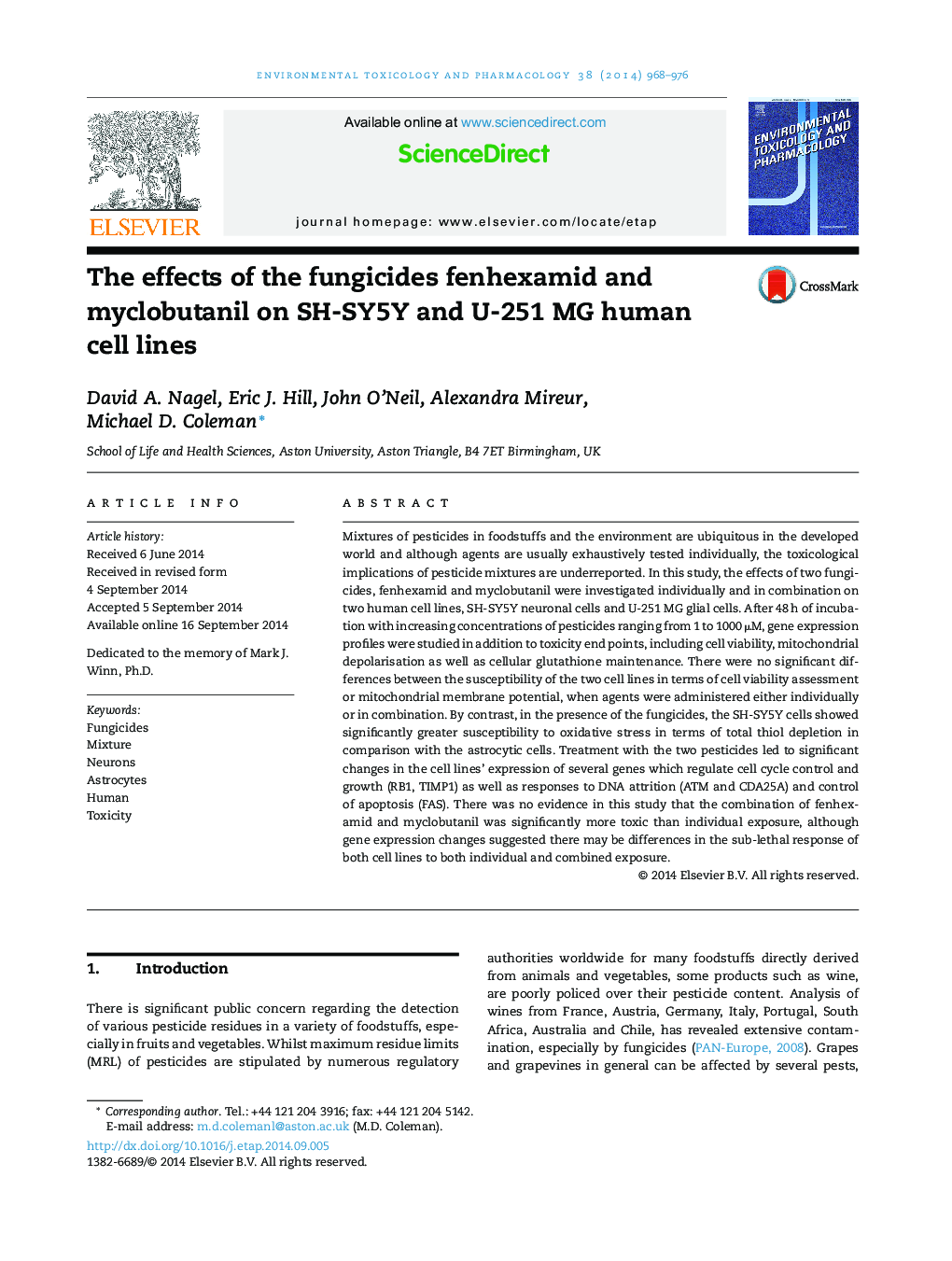| کد مقاله | کد نشریه | سال انتشار | مقاله انگلیسی | نسخه تمام متن |
|---|---|---|---|---|
| 2583418 | 1130690 | 2014 | 9 صفحه PDF | دانلود رایگان |

• Myclobutanil and fenhexamid together were no more toxic than the agents used alone.
• The SH-SY5Y's were more vulnerable to oxidative stress than the U251 cells.
• The pesticides affected cell growth and apoptotic gene expression.
• Gene expression changes post exposure were cell line dependant.
Mixtures of pesticides in foodstuffs and the environment are ubiquitous in the developed world and although agents are usually exhaustively tested individually, the toxicological implications of pesticide mixtures are underreported. In this study, the effects of two fungicides, fenhexamid and myclobutanil were investigated individually and in combination on two human cell lines, SH-SY5Y neuronal cells and U-251 MG glial cells. After 48 h of incubation with increasing concentrations of pesticides ranging from 1 to 1000 μM, gene expression profiles were studied in addition to toxicity end points, including cell viability, mitochondrial depolarisation as well as cellular glutathione maintenance. There were no significant differences between the susceptibility of the two cell lines in terms of cell viability assessment or mitochondrial membrane potential, when agents were administered either individually or in combination. By contrast, in the presence of the fungicides, the SH-SY5Y cells showed significantly greater susceptibility to oxidative stress in terms of total thiol depletion in comparison with the astrocytic cells. Treatment with the two pesticides led to significant changes in the cell lines’ expression of several genes which regulate cell cycle control and growth (RB1, TIMP1) as well as responses to DNA attrition (ATM and CDA25A) and control of apoptosis (FAS). There was no evidence in this study that the combination of fenhexamid and myclobutanil was significantly more toxic than individual exposure, although gene expression changes suggested there may be differences in the sub-lethal response of both cell lines to both individual and combined exposure.
Journal: Environmental Toxicology and Pharmacology - Volume 38, Issue 3, November 2014, Pages 968–976